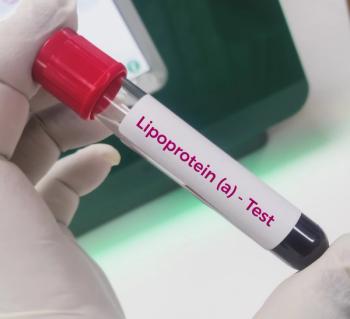
FDA Plans to Research Drug Advertising: 4 Things to Know
The goal is to help ensure that prescription drug marketing information for consumers and healthcare providers is truthful and balanced. Here’s what the agency plans to research.
The FDA announced in March that it will continue its social and behavioral science research to better understand how people make decisions about the products it regulates by conducting six new studies this year.
Here are four things to know about the research.
1. Why it is necessary. Kathryn Aikin, PhD, senior social science analyst, FDA, Office of Prescription Drug Promotion (OPDP), Silver Spring, MD, says the FDA will conduct research on promotional communications, including the effectiveness of disclosures, communications aimed at healthcare providers, and consumer understanding of the accelerated drug approval process, in order to help ensure that prescription drug marketing information for consumers and healthcare providers is truthful, balanced, and accurately communicated.
2. The goal of the research. Research is aimed at promoting public health by investigating advertising and promotion-related topics that affect the public’s perception of drug risks, benefits, and uses. “OPDP’s research will help ensure that consumers and healthcare professionals have the necessary information in order to make informed decisions and use products safely and effectively,” Aikin says.
Upcoming studies will examine the effects of context and disclosure of FDA approval on healthcare provider perceptions of product information and the potential associations between disease information and product information, Aikin says. It will also explore the meaning of accelerated approval status and ways in which this information can be better communicated to consumers, as well as healthcare provider perceptions of newly approved drug products.
3. Targeted areas. OPDP has consistently conducted research to evaluate the aspects of prescription drug promotion that it believes are most central to its mission, focusing on three main topic areas: advertising features, including content and format; target populations; and research quality. “By evaluating advertising features, we assess how elements such as graphics, format, and disease and product characteristics impact the communication and understanding of prescription drug risks and benefits,” Aikin says. “Focusing on target populations allows us to evaluate how understanding of prescription drug risks and benefits may vary among audiences. Our focus on research quality aims to maximize the quality of research data through analytical methodology development and investigating sampling and response issues.”
4. How the research will be conducted. OPDP uses a variety of methodologies in its research, including focus groups, survey and experimental research, and conducts qualitative research for developmental purposes.
“Before we start recruiting participants or collecting data, we announce our proposed studies in the Federal Register to provide the public and other stakeholders an opportunity to review and comment on the studies and methodology,” Aikin says.
The agency evaluates studies’ results within the broader context of research and findings from other sources. “This larger body of knowledge collectively informs our policies as well as our research program,” Aikin says.
Industry experts support research efforts
In response to the announcement, Christopher M. Mikson, JD, MD, partner and coleader of the healthcare practice at Mayer Brown, a global legal services provider, points out that direct-to-consumer (DTC) advertising of prescription drugs has been controversial, and continues to have many critics.
In 2015, the American Medical Association called for a ban on DTC prescription drug advertising-which was unsuccessful. “At this point, it is likely to remain well established in the United States, as evidenced by the FDA relaxing restrictions on it in 1997 and the agency’s current plans to conduct studies on the effects of DTC advertising in order to inform future regulation of the practice,” he says.
Mikson points out that an important aspect of FDA’s research will evaluate promotional forms of communication that do not require access to the Internet, since much of the patient population consuming prescription drugs, and especially long-term for chronic conditions, do not have computer access. The FDA estimates that
F. Randy Vogenberg, PhD, principal, Institute for Integrated Healthcare, a research firm, also supports the FDA’s initiative. “Industry should welcome the FDA’s effort to better understand communication effectiveness around prescription drugs,” he says. “It’s important to understand both clinical and economic terms that can best empower and then enable consumers to make informed decisions about a drug’s benefits or risks along with access and affordability.”
Vogenberg cites a general disconnect across the entire healthcare industry regarding terms, wording, and definitions, which the research should address. In some cases, the same term has a different meaning from one organization to the next. For example, the term “patient assistance program” is often thought of as a coupon program but in actuality, such programs vary significantly by manufacturer and offer a range of discounts or even free medications based on a number of pre-defined criteria. Another example is the acronym “CIN.” Many people think it stands for “clinically integrated network.” However, it could refer to “community integrated network.” “Although these terms are similar, they differ in terms of organizational goals,” he says. “This lack of effective cross-functional communication results in bad decision-making by all parties, as well as adverse events from drug use and healthcare,” he says.
Karen Appold is a medical writer in Lehigh Valley, Pennsylvania.
Newsletter
Get the latest industry news, event updates, and more from Managed healthcare Executive.






















































